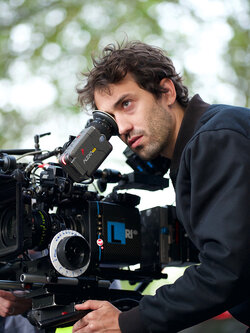Paul Guilhaume, AFC, discusses the shooting of "Les Olympiades", a film by Jacques Audiard
Paris in black-and-whiteHow did the project come together ?
Paul Guilhaume : Jacques Audiard wanted a quick and unfussy shoot that would take less than seven weeks, usually with two cameras, in the same configuration we’d used together on "The Bureau" (Audiard and Guillaume shot the two final episodes of the last season together). Marion Gaillard operated the B-camera, very often a Steadicam, but Jacques’ cinematographic language freely combines handheld camera, Dolly and tracking shots in the same scene…
In order to successfully shoot this film in the time we were given, we had to shoot out of chronological order. So, we started with Emilie’s apartment. We went from the material that was easiest for the actors to what was more difficult and technical. This was a big 10-day block of indoor shooting, on the 20thfloor of one of the towers in the neighborhood, and a tour de force for me in terms of lighting.
Tell me about that challenge you faced.
PG : First of all, shooting on the 20th floor of a tower means bringing all of the equipment up there… when you have to rely on elevators, you’re evidently limited in terms of weight and volume. It was also impossible to light from outside, despite the many windows. Especially, Jacques wanted to shoot quickly, and so I wanted to use a setup for the main lighting that has not often been used on shoots up to now : we covered all the windows with RoscoView polarizing filters. By using a second polarizing filter on the camera, we were able to control the amount of light coming in through the windows and keep a certain amount of lighting consistency throughout the day. Rather than adding lighting indoors in function of the position of the Sun or the weather outdoors, the idea was to subtract light : we could increase or decrease the amount of light coming in through the windows by simply rotating the filter in front of the camera, without affecting the quantity of light coming in. The effect is incredible the first time you see it, because you feel like you’re digitally adjusting a computer-controlled light source coming in through the windows. Jacques loved this device and was very involved in the tests and in its operation.
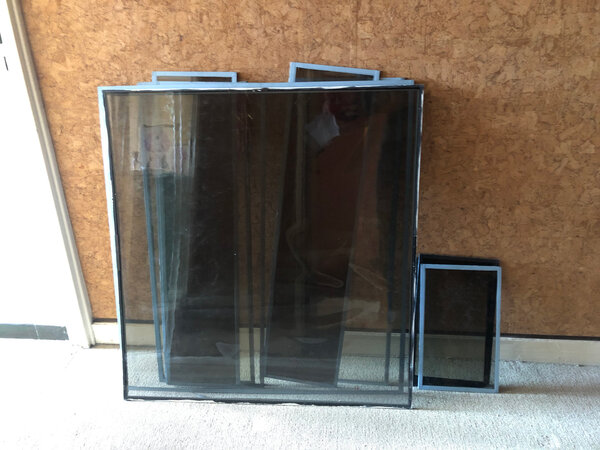
Because the apartment was surrounded by glass windows and the shooting schedule alternated between day and night scenes, we had to be able to quickly remove and replace the filters on the windows. The set design crew made custom frames for each window, with a patina that matched the sets, and set up magnets to make it easy to take them down and put them back up.
That required a bit of work in preparation and a non-negligible budget for outfitting the entire apartment, but the savings were substantial compared to the labor for construction and electricity if you wanted to do the same thing in studio.
Doesn’t polarization eat up a lot of light ?
PG : It’s simple : you lose three stops (1.5 via the window panels, and 1.5 via the polarizer on the camera). Jacques often mentioned the modern beauty “of a face lit by a screen” and so I was convinced that we should shot at a very high sensitivity. The Sony Venice and its 2,500ISO, along with the aperture of the Summilux, allowed us to shoot using light from smartphones and tablets, which were part of our characters’ worlds, and to use the polarized windows up to the end of the day. Everything ended up in a brilliant—almost silvery—black-and-white, whose highlights are reminiscent of Anders Petersen’s photography.
Why the Leitz lenses ?
PG : The film is solidly anchored in the present time. The main indication Jacques gave me a soon as we started preparing for the film was : “I would like a brilliant black-and-white”. During our tests, we immediately realized that older lenses, or lenses that gave too much substance to the images, would cause the film to shift into the past, and would mattify the image in a sense. The combination of the Venice camera and the Leitz Summilux lenses felt right to me, as it does a good job of rendering local microcontrasts and, also, it uses the camera’s Full Frame sensor to the fullest limits of the lenses’ coverage. To do that, we created a custom-made Frame Line that covered the image circle in 4.9K (between 4K and 6K Full Frame). The image was saved as 6K Full Frame, which allowed us to use the full definition of the new Angénieux EZ zooms. An example of this was on the Olympiades esplanade. I really like the definition of those shots.
Did you really shoot in black-and-white ?
PG : We shot in color with the Sony Venice. During color grading, this allowed Christophe Bousquet and I to isolate saturated elements and change their density as much as we wanted. A lot of the costumes were yellow or red, and the walls had been repainted green and blue. Virginie Montel (art director and costume designer) had had this experience on La Haine : a color shoot for a result in black-and-white. This search for brilliance required us to try to keep a pure black and a pure white reference in almost each frame to allow the eye to continually recalibrate itself. I remember a conference given by Marc Salomon, who pointed out how present these references are in each image of Fellini’s 8½, and how dynamic that approach makes the image. The art director and the sets also played an important role in making this possible. In lighting, and for the night scenes, I mainly used prop lighting in collaboration with the set designers. Because Jacques’ camera is often in motion, Benoît Jolivet (gaffer) perfected a 3D-printed armature that allowed us to incorporate Astera tubes inside of a wide-diameter Chinese lantern. Boomed by one of the sparks, we used this battery-powered, WiFi controlled projector to light the faces as accurately as possible with many variations throughout a shot. Our idea was really to work as a team with the set designers and the costumers to obtain the most brilliant image possible, and not to merely content ourselves with slapping on an effect during post-production.

So you were shooting in a very colorful world !
PG : The apartment was entirely repainted in blue and green colors ; the curtains were purple… it was weird !
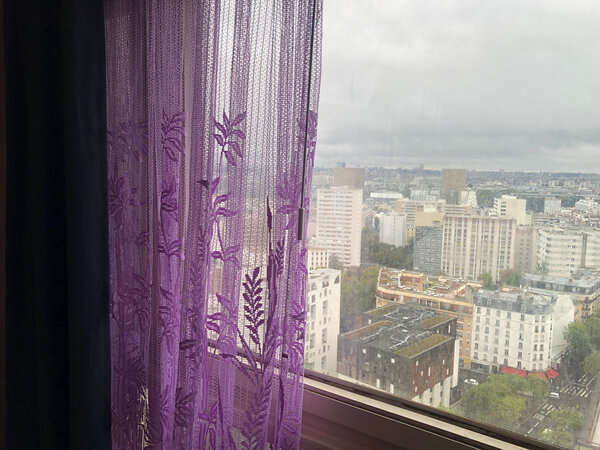
The hallway was covered in cork (only a part of the existing apartment was), which provided a very matte, texturized material in direct lighting, which became very shiny when backlit. Accessories like the satiny bedsheets, or the computer shell, too, were all opportunities to add brilliance to the image. We knew that a character dressed in red against a blue background would be easy to separate… We tried not to dress the characters in the same color so that we could separate them from one another. Mathieu Leclerc, our color scientist, created our texture tools for post-production. Christophe Bousquet then did a great job on color grading.
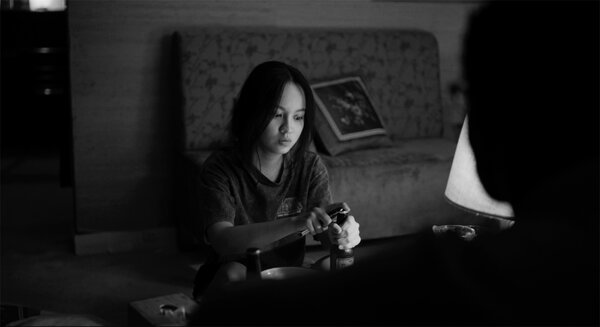
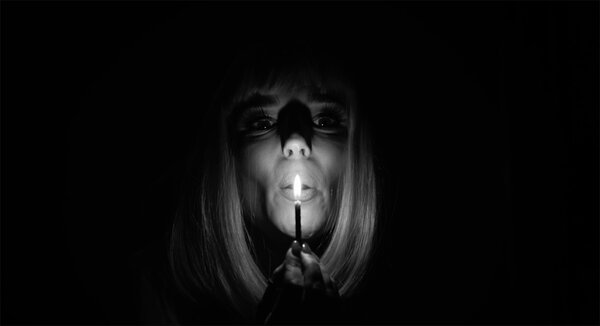
Why black-and-white, come to think of it ?
PG : Black-and-white really comes from the work that the film was an adaptation of. It was based on three graphic novels by Adrian Tomine, who works in black-and-white. Of course, the original stories take place in New York, but Jacques really wanted to keep the black-and-white feel in his film. I think he also wanted to propose a very different image of Paris, one that isn’t at all nostalgic. Shooting Paris in 2021, but without falling into a prosaic realism, either.
Did he surprise you ?
PG : Yes, his knowledge of the 13th Paris Arrondissement is truly encyclopaedic. He knows it all. The history of each location, their secrets… There is an extremely precise geography of that arrondissement in our film, even if the viewer doesn’t necessarily notice it. And from a photographic perspective, shooting on the Olympiades esplanade, with its brutalist architecture, immediately brings a cinematic feel to the image. There is a beauty to concrete and metal in black-and-white. I also think that Jacques Audiard didn’t want to shoot Paris in color : its street furniture, green barriers, and everything else that makes it so hard to shoot a story in the French capital.
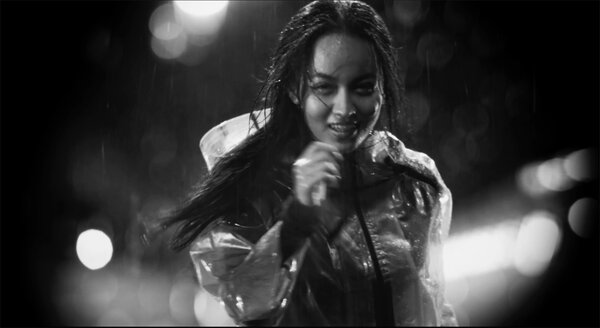
What about the fantasized jogging scene in the rain ?
PG : This scene is a moment in the plot where Emilie’s character is tripping on MDMA. Jacques was describing a totally de-realized shot, something straight out of an old cartoon, like when 2D layers are superimposed. We assembled this shot from four layers assembled in post-production. One was of heavy rain, the second was the location (shot by the B-camera crew), the third was a take with the actress under light rain, running on a treadmill against a blue background. The fourth was for vignetting and was also shot against a blue backdrop.
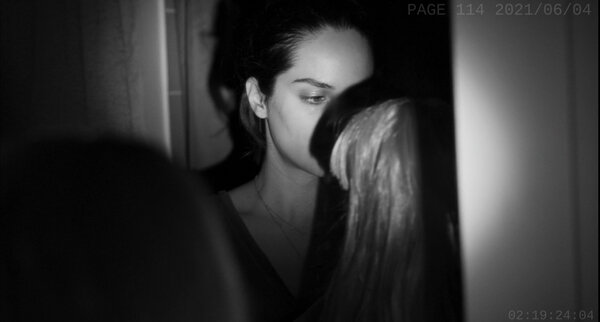
In this film, each character has his or her own fantasies and dreams. To bring this through in the narration, Jacques Audiard needed a separate cinematic approach to each one. For example, for Nora, this is the moment where she decided to put her blond wig back on to see Amber Sweet. We turned off all the lights, switched over to handheld camera with a flashlight in the right hand, and we followed Noémie Merlant right through her performance. This was a minimalistic setup, but it contains something on the order of a desire, a fantasy, which we think came across on the screen.
The second part of the film relies heavily on the virtual relationship between the characters Nora and Amber Sweet… How did you approach those scenes ?
PG : I think that this film is about the problem of communication in today’s world. All the characters constantly communicate through the mediation of screens, and a part of the shoot was dedicated to that. For all the scenes where Nora and Amber are talking, we went for a live shoot between two floors of the apartment. Noémie Merlant was filmed talking to her cellphone in her room, with two cameras, one a wide shot and the other a closer-up shot ; the same thing for the reverse shot in the screen. In parallel, on the floor below, Jenny Beth (Amber) was set up in front of a webcam, but without any cinema cameras. It was closeness and synchronicity alone that allowed the actresses and the director to work together.
What about the final scene in the Parc Montsouris ?
PG : This scene was an emotional highpoint for everyone. Because it was a crucial scene for the film, the shooting schedule planned for an entire day of shooting in the park. It was more than usual ; the rest of the time, we were shooting four to five scenes per day. After a few introductory shots in the morning, we were supposed to have the rest of the afternoon to shoot the main part of the scene. But something rare occurred between the actresses, and each one of them provided something incredible on the first take (before Marion’s Steadicam). I think that after less than one hour of setup and shooting, Jacques said that he had what he needed and that we could go on to the next thing, and that he had a new idea for a shot. Those are the moments where you really notice his extreme masterfulness.
However, the kiss shot seems completely separated from any reality…
PG : And yet, we shot it in the same location. Jacques for some time had the intuition that something was missing in that sequence. He asked me what we might be able to do to produce a more dream-like result, and completely flash the background. I was lucky to work with Benoît Jolivet as the gaffer : he always has a generator truck with him. We took out the equipment, formed a black cage around the actresses, and placed one or two 9 kWs behind a frame as backlighting. The kiss was filmed in situ, but in a sort of mini studio recreated inside the Parc Montsouris.
Adapted from three graphic novels by American author Adrian Tomine : Amber Sweet, Killing and Dying and Hawaiian Getaway.
Paris, 13th Arrondissement, Olympiades neighborhood. Emilie meets Camille who is attracted to Nora who crosses paths with Amber. Three girls and a boy. They are friends, sometimes lovers, and often both.
Interview by François Reumont translated by A. Baron-Raiffe, for the AFC.
 En
En Fr
Fr
